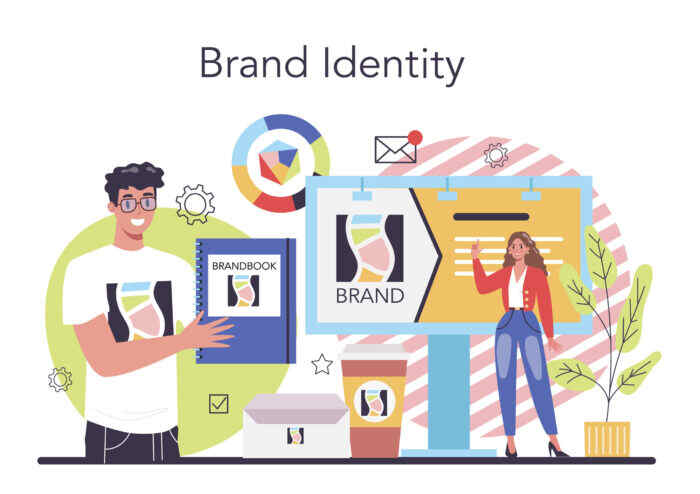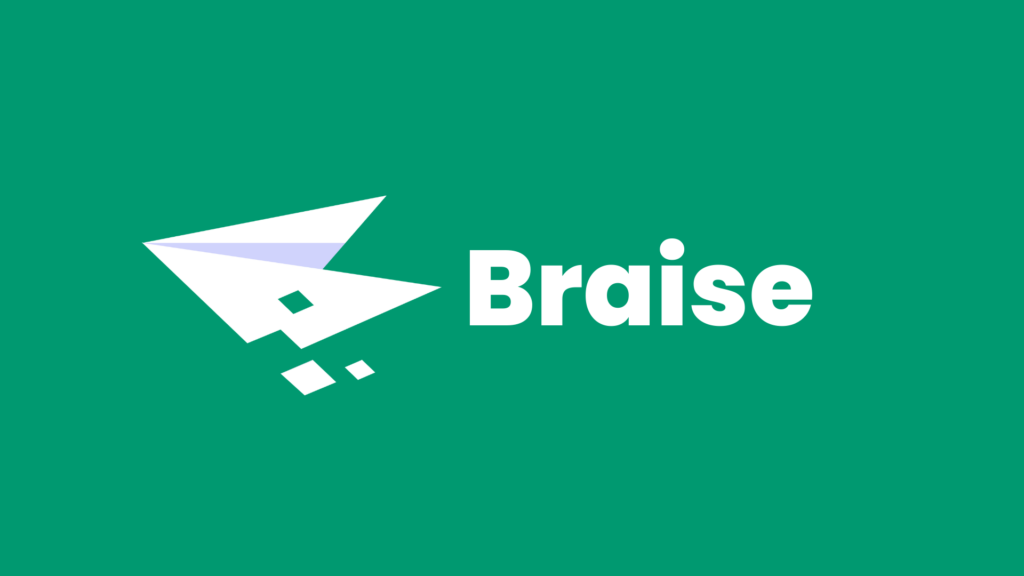In today’s highly competitive business landscape, establishing a strong and memorable brand identity is paramount. A well-crafted BI goes beyond a mere logo or color scheme – it embodies the essence of your company, communicates its values, and resonates with your target audience. In this comprehensive guide, we’ll delve deep into BI design, exploring its elements, significance, and pivotal role in enhancing user experience (UX). Additionally, we’ll clarify the distinctions between BI design and broader brand design strategies.

Understanding Brand Identity Design
Brand identity design is the cornerstone of a company’s image and perception in the market. It encompasses a range of elements that collectively define and distinguish a brand.
What is Brand Identity?
At its core, BI is a brand’s visual and emotional representation. It’s the total of how a brand looks, feels, and communicates to its audience. This includes the logo, color palette, typography, visual imagery, and messaging.
Why is Brand Identity Important?
A strong brand identity sets the stage for brand recognition, customer trust, and loyalty. It helps a brand stand out in a crowded marketplace, conveying its values and personality.
Elements of a Compelling Brand Identity
Creating a compelling brand identity involves a deep dive into various elements, each contributing to the overall impression and recognition of your brand.
Your logo is the visual symbol of your brand. It should encapsulate your brand’s essence in a simple yet memorable design. Consider iconic logos like Apple’s apple or Nike’s swoosh—these images are instantly recognizable and evoke strong associations with their respective brands.
A well-designed logo incorporates elements that resonate with your target audience. Colors, shapes, and symbols should align with your brand’s personality and values. It’s worth investing time and resources into logo design, as it will become the face of your brand.
Colors have a profound impact on human psychology and can evoke emotions, moods, and associations. Selecting the right color palette is not arbitrary but a strategic choice.
For example, blue is often associated with trust and reliability, which is why many financial institutions use it in their branding. Meanwhile, vibrant and bold colors may be more suitable for brands targeting younger audiences or those seeking to convey a sense of energy and innovation.
Your color palette should be consistent across all brand materials, creating a visual cohesion that aids in recognition and reinforces your BI.
Typography, the choice of fonts, and how they are used, play a significant role in brand identity. Fonts carry their personality and can convey messages even before words are read.
Consider how Coca-Cola’s elegant script font contributes to the brand’s timeless and classic image. Alternatively, a tech company might opt for sleek, modern fonts to convey innovation.
Typography guidelines should dictate which fonts to use in various contexts, ensuring a consistent tone and message across all brand communications.
Images and graphics are powerful tools for brand identity. Whether it’s product photography, illustrations, or custom graphics, these visuals should align with your brand’s message and values.
For instance, an eco-friendly brand may use images of nature, sustainability, and happy customers in natural settings. These visuals convey the brand’s commitment to environmental responsibility.
By curating and using imagery consistently, you can reinforce your brand’s identity and tell a visual story that resonates with your audience.
Your brand’s voice and messaging encompass the words you use to communicate with your audience. This includes your tagline, mission statement, social media posts, and website copy.
The tone and language should align with your brand’s personality. Are you formal and professional, or casual and friendly? Craft messaging that not only communicates what you do but why you do it and how it benefits your customers.
Consistency in voice and messaging helps create a unified BI and ensures that your audience receives a clear and coherent message at every touchpoint.
Brand Identity in UX: A Seamless Integration
In today’s digital age, where customers interact with brands through websites, apps, and various digital platforms, BI design has become closely intertwined with user experience (UX). A seamless integration of these two elements is key to creating a memorable and impactful brand presence.
The Intersection of Brand Identity and User Experience
Brand identity design and UX design intersect at multiple points along the customer journey. It’s not just about having a visually appealing website; it’s about ensuring that every interaction reinforces the brand’s identity.
Incorporating brand elements, such as the logo, color scheme, and messaging, into the user interface (UI) and overall UX design can create a cohesive and immersive brand experience. For example, when a user visits a website, the design should seamlessly reflect the brand’s colors and typography, immediately conveying a sense of familiarity.
How Consistent Branding Enhances UX
Consistency is a fundamental principle in branding and UX design. A consistent brand identity across digital touchpoints, such as a website, mobile app, and social media profiles, fosters recognition and trust. Users should feel that they are interacting with the same brand, regardless of where they encounter it online.
Consistency extends to the use of imagery, fonts, and even the language and tone used in messaging. When these elements align with the brand identity, users are more likely to feel comfortable and confident in their interactions.
Building Trust Through BI in UX Design
Trust is a vital component of a successful user experience. When users encounter a brand with a cohesive and well-executed identity, it conveys professionalism and reliability.
Imagine a user navigating an e-commerce website. The consistent use of the brand’s color scheme, clear and coherent messaging, and user-friendly interface all contribute to a sense of trust. Users are more likely to make purchases when they trust the brand, and a strong brand identity plays a significant role in building that trust.
Furthermore, a seamless brand identity in UX design helps users connect emotionally with the brand. Emotionally engaged customers are more likely to become brand advocates and loyal supporters.
Incorporating brand identity into UX design is not just about aesthetics; it’s a strategic approach to building and maintaining customer relationships in the digital realm. When done effectively, it creates a powerful synergy that leaves a lasting impression on users and sets the brand apart in a competitive marketplace.
Brand Identity Design vs. Brand Design: Unveiling the Differences
To navigate the world of branding effectively, it’s essential to understand the distinctions between brand identity design and the broader concept of brand design.
Brand Identity Design in Focus
Brand identity design is a subset of brand design. It zooms in on the visual and messaging elements that make up a brand’s identity. While these elements are crucial, they represent just one facet of the entire brand strategy.
At its core, BI design revolves around creating a visual and communicative identity that reflects the brand’s values and personality. This includes elements such as the logo, color palette, typography, imagery, and tone of voice. These elements are the tangible aspects of a brand that customers encounter.
A Holistic Approach to Brand Design
On the other hand, brand design encompasses a broader spectrum of considerations. It goes beyond the visual and messaging elements and encompasses the overall strategy for how a brand positions itself in the market.
The brand design includes:
- Brand Strategy: Defining the brand’s purpose, values, and positioning in the market.
- Customer Experience: Shaping how customers interact with and perceive the brand across all touchpoints.
- Brand Equity: The intangible value a brand holds in the minds of its customers.
- Brand Storytelling: Crafting narratives that connect with the target audience on an emotional level.
In essence, brand design is about creating a holistic and consistent brand experience that extends beyond the logo and color scheme. It involves the alignment of all aspects of the brand, both internally and externally, to convey a clear and compelling brand message.
While brand identity design plays a vital role in establishing the visual and communicative aspects of a brand, it’s just one piece of the larger branding puzzle. To truly master brand design, one must consider how every facet of the brand works together to create a memorable and impactful presence in the market.
Practical Tips for Crafting a Stellar Brand Identity
Creating a stellar brand identity requires a thoughtful and strategic approach. Here are some practical tips to guide you in the process:
1. Research and AnalysisBegin by conducting thorough research and analysis. Understand your target audience, their preferences, and pain points. Study your competitors’ branding strategies to identify gaps and opportunities. This research forms the foundation of your BI.
2. Consistency Across All Touchpoints
Maintain consistency in your branding across all customer touchpoints. This includes your website, social media profiles, packaging, marketing materials, and even customer service interactions. A consistent brand identity reinforces recognition and trust.
3. Flexibility and Adaptability
While consistency is crucial, your brand identity should also be flexible and adaptable. It should evolve with changing market trends and customer preferences. Consider how your brand can stay relevant while remaining true to its core values.
4. Measuring and Evolving Your Brand Identity
Regularly assess the effectiveness of your brand identity. Use key performance indicators (KPIs) to measure brand recognition, customer loyalty, and overall brand equity. Based on these metrics, be prepared to make adjustments and refinements to your brand identity as needed.
5. Seek Professional Expertise
Consider enlisting the help of branding professionals or agencies experienced in brand identity design. Their expertise can ensure that your BI is developed with precision and aligned with your strategic goals.
6. Storytelling Matters
Effective brand identity design tells a compelling story. Craft narratives and messaging that resonate with your target audience. Communicate not just what your brand offers but why it matters and how it can make a difference in customers’ lives.
7. Test and Iterate
Before fully launching your brand identity, test it with a select group of customers or stakeholders. Gather feedback and make necessary adjustments based on their insights. Iteration is a valuable part of the design process.
8. Legal Considerations
Ensure that your brand identity complies with trademark and copyright laws. Protect your brand assets, such as logos and slogans, to prevent infringement by others.
By following these practical tips, you can create and maintain a BI that stands the test of time, resonates with your target audience, and contributes to the long-term success of your business.
Conclusion:
In the world of business, a powerful brand identity is your competitive edge. It’s the visual and emotional bridge that connects your brand to your audience. As we wrap up this comprehensive guide, it’s essential to recap the key takeaways and emphasize the significance of mastering BI design.
A well-crafted brand identity:
- Builds Recognition: A strong brand identity makes your business instantly recognizable, even in a crowded marketplace.
- Fosters Trust: Consistency in branding and messaging builds trust with your audience, a crucial factor in brand loyalty.
- Drives Customer Loyalty: A memorable brand identity can lead to customer loyalty, turning one-time buyers into lifelong advocates.
- Communicates Values: Your brand identity communicates your company’s values and personality, helping customers align with your mission.
- Enhances User Experience: Integrating your brand identity into user experience design creates a cohesive and immersive brand experience.
- Supports Strategic Goals: BI design aligns with your strategic goals, ensuring that every visual and communicative element serves a purpose.
As you embark on the journey of crafting or refining your brand identity, remember that it’s not just about aesthetics; it’s about strategy and storytelling. Your BI should not only look good but also communicate the essence of your brand.
Continuously monitor and measure the impact of your BI, adapting it as needed to remain relevant and effective. Seek professional expertise when necessary, and don’t hesitate to iterate and refine your identity based on feedback and changing market conditions.
In conclusion, mastering brand identity design is an investment in your brand’s long-term success. It’s the art of crafting a distinctive and enduring presence in the hearts and minds of your audience. With dedication, strategy, and a deep understanding of your brand’s unique identity, you can elevate your brand to new heights and leave an indelible mark on your industry.
Thank you for joining us on this journey into the world of brand identity design. We wish you every success in creating a BI that truly reflects your brand’s essence and captivates your audience.







